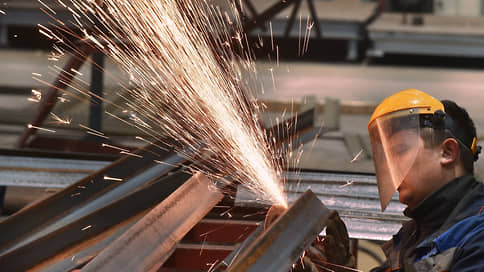This work does not cost so much – Newspaper Kommersant No. 58 (7503) dated 04/05/2023
[ad_1]

Real wages in February 2023 grew in annual terms by 0.6% against the backdrop of a 3.2% decline in the economy, according to the Ministry of Economy. Macroeconomists record a continuing lag in productivity from wage growth in market sectors against the background of a record reduction in unemployment and the flow of labor into the public sector. This threatens not only to increase prices and reduce capital investment, but also to compress potential GDP growth in the future.
Having calculated the unit labor costs (output per employee, taking into account the dynamics of industry producer prices and the growth of nominal wages), the Center for Economic Forecasting of Gazprombank (CEP) notes that for most industries, especially export-oriented ones, labor productivity in 2022 grew noticeably slower wages. “The growth in labor costs was not fully outpacing, but more compensated for the lag formed in 2021 with high export earnings — the ratio returned to the levels of 2018–2020,” the CEP says. In turn, the calculations of Alexander Isakov from Bloomberg Economics (where labor costs are estimated as the ratio of payroll to revenue) record that the competitiveness of processing has been growing since 2018, as growth in output and selling prices more than offset a moderate increase in wages. In 2020, the picture changed briefly – the decline in output and prices was not offset by a decrease in employment, but the rise in prices in 2021 and the recovery in output corrected the increase in labor costs. In 2022, “radical changes” began – wage growth remained in double digits, and output began to decline. Producer prices initially compensated for these losses, but stopped doing so from the second half of the year until today. “The situation in processing really does not look favorable – neither for the growth of private sector investment, nor in terms of inflation,” the economist concludes.
According to the CEP, the situation in construction stands out, where labor costs grew even faster than the average for the economy (including in 2021), and were not accompanied by a commensurate increase in construction volumes. “In contrast to the more balanced situation in the industry (taking into account production.— “b”), the future slowdown in construction may lead to a greater reduction in wages/employment in the industry,” the center’s analysts believe.
Calculations by Bloomberg Economics are already recording a fall in labor costs in construction due to cuts, output and prices. In 2021, wages in the industry and employment growth outpaced output growth, and part of the gain from subsidized mortgages was redistributed not only to shareholders, but also to employees. In 2022, an increase in output and a decrease in employment in construction led to a fall in unit labor costs, which continues to this day. “The industry has been one of the main donors to mobilization, along with retail,” the economist notes.
Overall, Bloomberg Economics concludes that unit labor costs rose rapidly in 2022 and continue to rise across all nonfinancial private sector firms. This may lead to a reduction in employment in 2023 to normalize unit costs – and the state will not seek to maintain employment at the sectoral level, but will absorb the labor force. In fact, we are talking about the realization of the risk that the head of the Bank of Russia, Elvira Nabiullina, warned about in 2022: “Wage growth in 2023 may outpace the rate of increase in labor productivity … this may lead to an additional increase in prices through business costs.” In the long term, this situation also reduces the potential growth of the economy – up to 1%, according to economist Rodion Latypov, the author of the Solid Numbers Telegram channel. “The recipe for higher potential growth rates is more labor and higher productivity through the use of capital,” he recalls.
[ad_2]
Source link






